Serrated Wrack / All Year Round / Edible
Other Common Names:
Toothed wrack, Saw wrack
Latin Name:
Fucus serratus
Physical Characteristics:
A larger wrack that can grow to 60cm long.
This is a brown seaweed with dark, wiry stems and slightly lighter, flat straplike fronds with distinctive serrations or teeth along the edges.
The frond tips are slightly roughened in texture.
Above the tips there is a distinctive midrib.
Toothed wracks grow thickly on the rocks low on the shore.
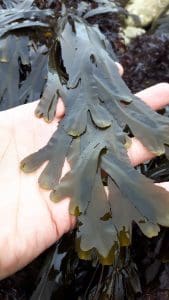
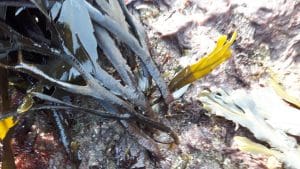
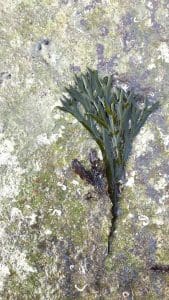
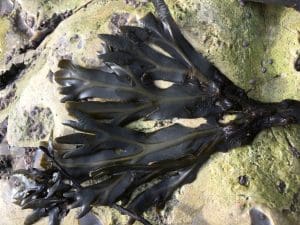
Habitat, Range and Distribution:
Found mostly on hard substrata low on the shore, especially on more sheltered coasts.
They are found throughout British and Irish coasts and notably on the coast of France and the southern tip of Sweden.
Conservation Considerations:
This is a common seaweed.
Only harvest what you need, never stripping an entire patch.
Take only the tips, leaving the rest of the algae to complete its life cycle.
Harvest Time and Techniques:
Being lower on the shore, this wrack should be harvested during the two hours around low tide.
Cut the tender tips away from the more wiry stems.
Could Be Confused With, and Other Safety Notes:
This wrack is distinctive due to its flat strap-like frond tips and serrated edges.
All the other wracks are edible.
Ensure that the coast from which you are harvesting has good water quality, and be wary of harvesting during winter due to higher sewage loads in seawater.
Edible Uses:
The flat frond tips make good additions to salads, stir fries, sandwiches and anything else that needs a salty kick.
All the wracks make a very good soup thickening and flavouring agent when dried and powdered. Ensure complete drying for best results.
These seaweeds along with other wracks actually make a really nice pickle, I usually cut the top 5cm off and use those bits, pop them straight in a jar and pour over your favourite pickling liquor, hot. It will partially cook them but now make them mushy. The resulting pickle is fantastic.
Medicinal Uses:
Brown seaweeds are high in iodine, and were traditionally used for goitre. Use seaweeds as a tonic food – little and often – to optimise nutrient levels and promote good health long term.



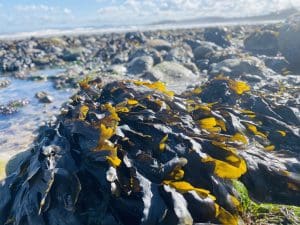
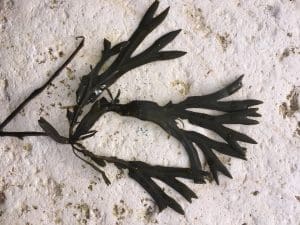
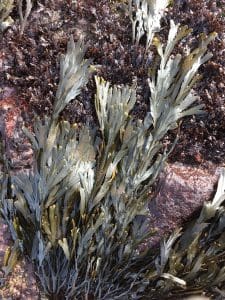



Leave a Reply
You must be logged in to post a comment.